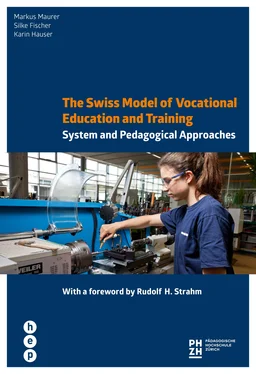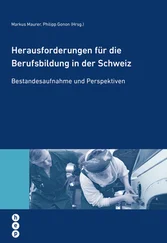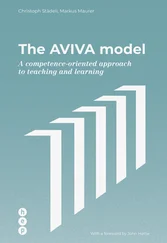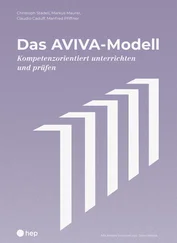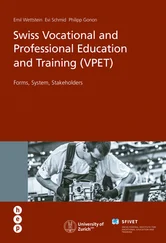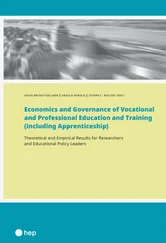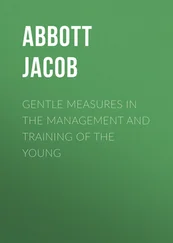3The Swiss education and training system
VET in Switzerland is closely linked to the other sectors of the education and training system. Illustration 1 provides an overview of this system. It shows that VET is an integral element of this system and that there are various pathways from VET to different types of tertiary education.
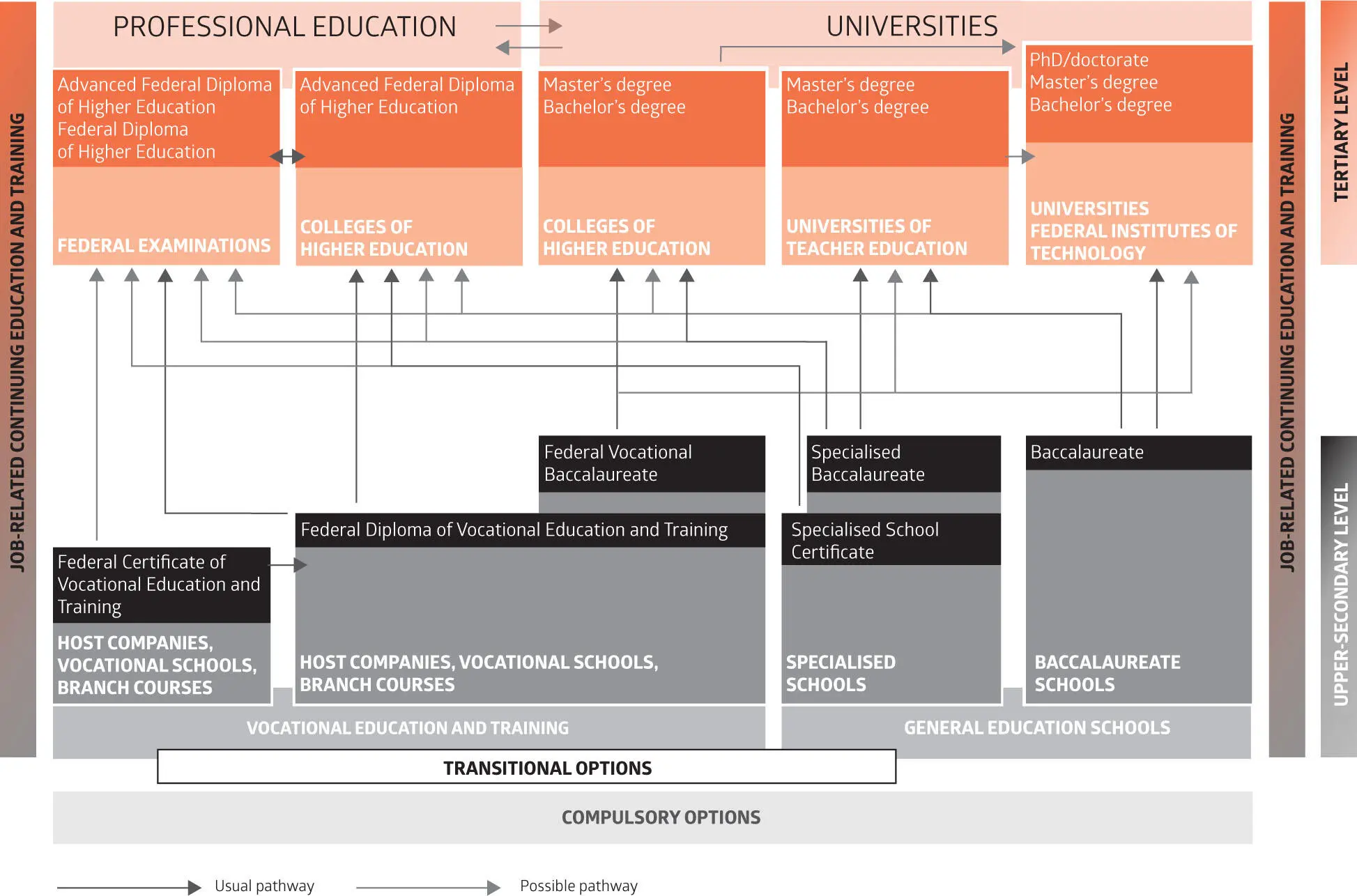
Illustration 1: Overview of the Swiss education and training system. Source: SERI, 2016 (p. 6)
In the following pages, we outline the different sectors of this system.
3.1Compulsory education and baccalaureate schools
In most cantons, compulsory schooling lasts for nine years and is free of charge. Six years of primary education are generally followed by three years of lower secondary education (for the ages of approximately thirteen to sixteen years), which are characterised by performance-based tracks with either basic or more expanded curricula. In order to prepare students for their transition to upper secondary VET, vocational guidance plays a key role in lower secondary education. It is provided both by the teachers and by centres for vocational guidance (Berufsinformationszentren, BIZ).
Academically able lower secondary graduates who do not wish to enrol in VET after nine years of compulsory education continue their education at baccalaureate schools, and this leads to the Federal Academic Baccalaureate. This qualification allows direct entry into cantonal universities and into the federal institutes of technology (ETH). After an internship of one year, access is also possible to the Universities of Applied Sciences (UAS). In 2015, only 20% of qualifications at the upper secondary level were Federal Academic Baccalaureates. 3By international standards, this figure is very low. However, highly selective access to the baccalaureate schools is one of the key reasons why VET in Switzerland also caters to academically very able graduates from lower secondary education.
3.2VET at upper secondary level
VET programmes at upper secondary level prepare learners for three types of qualifications:
Federal VET Diploma
This qualification can be achieved after three to four years of formal VET. Specifically the VET programmes for trades (e.g. carpentry, electrical wiring) and industry (e.g. mechanical engineering) are four years long. Out of all VET graduates in 2014, approx. 91% achieved a Federal VET Diploma. 4This qualification prepares for direct labour market entry but also provides access to professional education and training (PET) at the tertiary level.
Federal VET Certificate
Programmes that lead to this qualification take two years. They mainly cater to students with difficulties in meeting the exigencies of the more demanding programmes for the VET diploma. In principal, this certificate allows one to enrol in the second year of programmes that lead to the VET diploma. This depends, however, on the availability of apprenticeship positions in host companies. In 2014, approx. 9% of all VET graduates achieved a VET certificate.
Federal Vocational Baccalaureate
Provided they have the support of their host company and they meet the entry requirements, VET students that prepare for the Federal VET Diploma can enrol in additional preparatory classes to study for the Federal Vocational Baccalaureate (FVB). This qualification provides access to the Universities of Applied Sciences (UAS). The FVB has existed, in this form, since 1994, and has contributed considerably to the permeability and the attractiveness of VET for students. Students who have already obtained a Federal VET Diploma can prepare for the FVB during an extra year of full-time or two years of parttime schooling (see section 7).
Tertiary education with particular relevance for VET graduates consists of two segments: professional education (PET / Tertiary B) and the Universities of Applied Sciences (UAS / Tertiary A).
PET programmes can be accessed by those with a VET diploma and are generally started some years after graduation, when most students have gained some work experience and start to study on either on a full-time or part-time basis. The so-called college degree programmes (in eight different professional fields) are offered in more school-based form and prepare students for relatively broad occupational fields, such as business administration, healthcare or mechanical engineering. Meanwhile, there are four hundred federal PET examinations at two levels – Federal Diploma Examination (Eidgenössische Berufsprüfung) and Advanced Federal Diploma Examination (höhere Fachprüfung) – most of which prepare students for highly specialised professions. 5
The Universities of Applied Sciences (UAS, Fachhochschulen) offer bachelor programmes and an increasing number of master’s programmes to students with an FVB as well as to graduates from some of the PET programmes (which do not require an FVB). Teaching and research at the UAS is more applied and mainly caters to former VET graduates who have gained considerable work experience.
VET graduates who complement their studies with an FVB can also undergo a University Aptitude Test and, if successful, then enrol at a regular, cantonal university or at one of the two federal institutes of technology. The preparatory course for the test lasts one year and is offered by both public and private schools.
Конец ознакомительного фрагмента.
Текст предоставлен ООО «ЛитРес».
Прочитайте эту книгу целиком, купив полную легальную версию на ЛитРес.
Безопасно оплатить книгу можно банковской картой Visa, MasterCard, Maestro, со счета мобильного телефона, с платежного терминала, в салоне МТС или Связной, через PayPal, WebMoney, Яндекс.Деньги, QIWI Кошелек, бонусными картами или другим удобным Вам способом.
